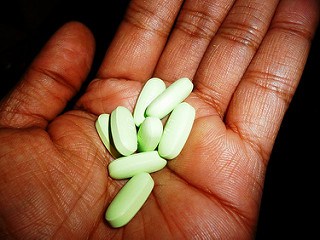February 05, 2018

High levels of antibiotic resistance found worldwide. A report by the Global Antimicrobial Resistance Surveillance System (GLASS) reveals widespread and high levels of resistance to a number of serious bacterial infections in both high- and low-income countries. The World Health Organization (WHO) initiated GLASS and has rolled it out in 52 countries (25 high-income, 20 middle-income and 7 low-income) so far. According to the report, the most commonly reported resistant bacteria were Escherichia coli, Klebsiella pneumoniae, Staphylococcus aureus, Streptococcus pneumoniae, and Salmonella species, with alarmingly high resistance levels in some countries. The GLASS collaboration aims to standardize global surveillance of antimicrobial resistance. [BMJ]
Wellcome consortium to boost global AMR surveillance. The UK’s Wellcome Trust has launched a new antimicrobial resistance (AMR) surveillance initiative called SEDRIC (Surveillance and Epidemiology of Drug-resistant Infections Consortium). SEDRIC will convene international experts in infectious diseases, epidemiology, and human and animal health to identify gaps in AMR surveillance and to help countries strengthen their capacity to collect data on drug-resistant pathogens. [Wellcome Trust announcement, CIDRAP]
FDA offers guidance on new antimicrobials. The US Food and Drug Administration (FDA) has shared guidance on the implementation of the Generating Antibiotic Incentives Now (GAIN) Act for the pharmaceutical industry. Draft guidelines spell out policies and procedures related to the designation of qualified antimicrobials. GAIN offers incentives for the development of antibacterial and antifungal drugs to treat serious infections and offers pharma companies a five-year extension to exclusivity for qualified infectious disease products. [FDA draft guidance, CIDRAP]
FDA approves oral vancomycin treatment of C. difficile diarrhea and enterocolitis. The FDA has approved Firvanq, an oral formulation of vancomycin for treating Clostridium difficile-associated diarrhea (CDAD) and enterocolitis caused by Staphylococcus aureus, including methicillin-resistant strains. [News release]
Neither antibiotic cycling nor mixing reduce the emergence of resistance. Antibiotic mixing and cycling are not effective in reducing resistance rates, according to a new study in The Lancet Infectious Diseases. Antibiotic cycling refers to rotating antibiotic groups with the aim of reducing the prevalence of antibiotic resistance, and antibiotic mixing was defined in the study as treating each consecutive patient on a ward with alternating classes of antibiotics. Researchers found that the overall prevalence of antibiotic resistance in eight European ICUs was not affected by antibiotic cycling or mixing interventions. [The Lancet Infectious Diseases]
India steps up the fight against tobacco. With the aim of curbing tobacco use, the Indian government has asked the Supreme Court to invoke a rarely used doctrine to classify tobacco as res extra commercium. The Latin phrase means “outside commerce.” If applied, the designation would strip India’s $11 billion tobacco industry of its right to trade. The classification was applied to alcohol in the 1970s, which allowed for stricter regulation of alcohol in the country and helped two Indian states to ban it completely. [Reuters]
More evidence links flu with heart attacks. People affected with flu have a six-fold greater risk of heart attacks during the first seven days of the diagnosis, according to a study in The New England Journal of Medicine. The study found that other respiratory infections also increased the incidence of heart attacks in adults 35 years and older. The study supports flu vaccination strategies in people who are at risk for heart attacks. [The New England Journal of Medicine]
Study highlights Zika, dengue, chikungunya co-infection. A study in BMC Infectious Diseases has reported three cases of patients who were simultaneously infected with Zika, dengue, and chikungunya. It also reported cases of co-infection with any two of the three viruses. The researchers studied 157 blood samples from patients at the Colombian-Venezuelan border who had symptoms consistent with dengue. Eighty-two patients tested positive for one or more viruses: more than seven percent of the patients had dengue and chikungunya; more than six percent had dengue and Zika; and a little more than five percent had both chikungunya and Zika. Three patients (1.9 percent) were infected with all three of the mosquito-borne viruses. [BMC Infectious Diseases]











